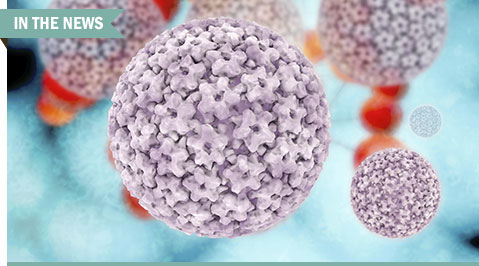 Image credit: xrender/Thinkstock
Image credit: xrender/Thinkstock
The statistics for genital human papillomavirus (HPV) infection are daunting. Women have an estimated 80% lifetime risk of contracting HPV, and it is responsible for nearly 10% of all female cancers worldwide with more than 250,000 deaths annually, giving HPV the notorious title as the most common sexually transmitted disease. Just about all cases of cervical cancer are caused by a subset of HPV types. A vaccine developed to target HPV16 and HPV18—the two most prevalent types—has the ability to prevent most cervical cancers and other HPV-associated cancers.
Understanding the role of HPV infection in human disease, in addition to keeping up on the status of HPV vaccination and current cervical cancer screening technologies and screening guidelines, are all important skills for laboratorians.
An afternoon symposium on July 30 at AACC's Annual Meeting & Clinical Lab Expo, “Recent Advances in Cervical Cancer Prevention by HPV Vaccination and Screening” (35201), will provide a tutorial on the molecular biology of HPV infection and cervical cancer in addition to current techniques and recommendations for cervical cancer screening and prophylactic HPV vaccination.
Yusheng Zhu, PhD, DABCC, FACB, director of Clinical Chemistry and Toxicology and associate professor of pathology at the Medical University of South Carolina’s Department of Pathology and Laboratory Medicine, plans to discuss several emerging aspects of the molecular biology, pathogenesis, and epidemiology of HPV.
Regarding the viral genome of HPV, Zhu will talk about the HPV genes that contribute to the proliferation of infected cells and their lateral expansion, oncogenesis, and possible drug resistance. Through this discussion, attendees will learn about the newly understood functions of HPV genes.
“I will talk about the major oncoproteins of HPV that are crucial in the malignant conversion of the cervical epithelium,” he told CLN Stat. The goal is for attendees to be able to describe the mechanism of cervical cancer caused by HPV, he says.
Zhu also plans to discuss the epidemiology of HPV infection in women and men and talk about other factors associated with the oncogenesis of HPV, such as cigarette smoking and hormonal contraction. He will also explain how the HPV genotype differs in various regions of the world. “The attendees will know the most frequent genotypes of HPV in their population so that more effective vaccines and drugs can be developed to prevent HIV infection and to treat patients accordingly,” Zhu explained.
Register online to attend this session and learn more about HPV gene function.